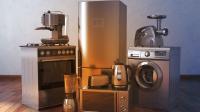Avoiding 4 Most Common Kitchen Toxins With Green Cookware
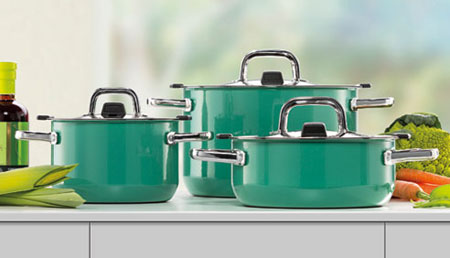
Cookware
Most of us think we’re fairly well aware of the dangers that might befall us in the kitchen. We know not to store meat on the shelf above the vegetables, we know to wash our hands and wipe down surfaces, and we also know about cooking temperatures and expiration dates. But our food isn’t the only thing we have to worry about. There are more dangers lurking about in our crafty kitchens than simple cross-contamination, undercooked food, or moldy bread. Surprisingly enough, even the appliances and cookware you use can harbor unsavory chemicals. And many of those kitchen items that are supposed to help you can actually hurt you. Let’s take a look at some of these common kitchen toxins and how we can choose healthier options by using green cookware and changing how we handle the items already in our cupboards.
Not all cookware is created equal, and many of our old standbys are less than stellar options for our health. Some of our most common cookware should be replaced with better, less reactive alternatives. Let’s take a closer look at what we should ditch instead of dine with for a safer kitchen:
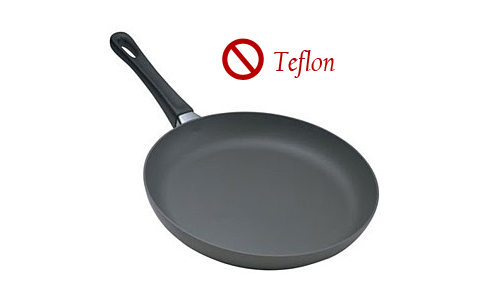
Teflon
Everyone loves non-stick technology. It’s what keeps our sunny-side up eggs sunny, and our sauces saucy. But it can also leach dangerous toxins into our meals. Those glorious conventional non-stick surfaces we love so much are often coated with polytetrafluoroethylene (PTFE), also known as Teflon. Used commercially since the 1940s, Teflon releases toxic fumes at temperatures over 500 degrees that can cause flu-like symptoms (also known as “Teflon flu”). These fumes are so toxic they can even kill the family parakeet.
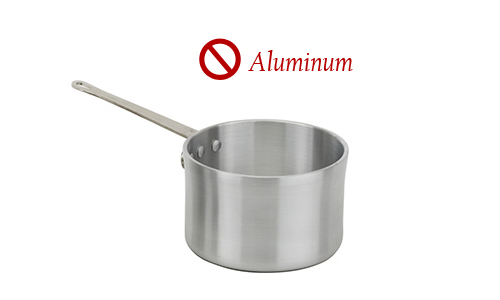
Aluminum - Common metal used to make all kinds of cookware
Aluminum
Aluminum is a great substance for conducting heat, which is why it has been such a popular substance for cookware. But this metal has also been linked to Alzheimer’s disease and dementia. And it leaches easily into our foods. An alternative option is anodized aluminum, which is less reactive and less likely to leach into food. But even this option is not worry-free. Repeated exposure to acidic foods can cause this cookware to de-anodize over time.
But tossing out those Teflon and aluminum pans doesn’t mean all is lost. There are many great alternatives, and even one (cast iron) that comes complete with some added nutritive power!
Ceramic
Ceramic is the Superman of the green cookware world. Solid and damage resistant, ceramic cookware can be heated up to a searing 2,700 degrees Fahrenheit and then tossed into an ice bath without breaking. And even better—this durable option won’t release fumes or leach chemicals into your food. But what about non-stick, you say? Well we’re in luck; the ceramic cookware created by the GreenPan company uses a patented Thermolon™ ceramic non-stick technology that gives us all the benefits of a non-stick surface without also serving us up a side of the ‘Teflon flu’.
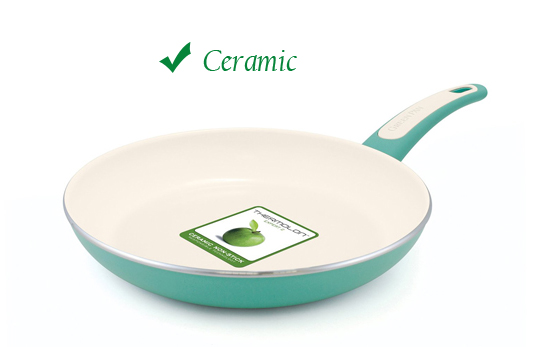
Ceramic pans: Advanced replacement for teflon - Credit: GreenPanTM
Cast Iron
A good cast iron pan can be a cook’s best friend. Families can pass down a good cast iron pan from generation to generation and still fully enjoy its benefits. Cast iron is one of the safest green cookware options available, and if seasoned properly, a cast iron pan can offer up impressive non-stick properties. As an added perk, this pan can go from the stovetop directly to the oven, making it an incredibly versatile kitchen utility. And if that wasn’t enough—cast iron pans even contribute some much-appreciated iron to the foods you choose to cook in them.
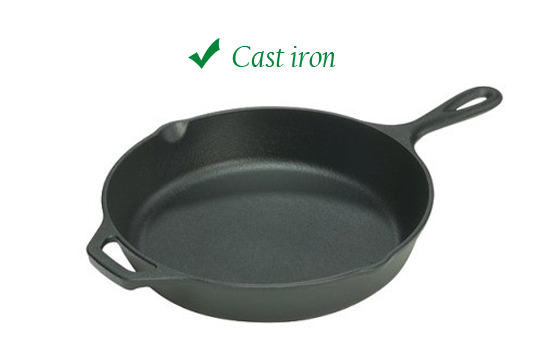
Cast iron is considered safe metal for cookware - Credit: LodgeTM
Appliances and Containers
It’s sensible to question your cookware when it comes to your health, but did you know those small kitchen appliances, food storage containers, and water bottles in your cupboards may also pose a health threat? Most of us have heard of manufacturers expanding their product lines to include BPA and phthalate-free options. Let’s take a closer look at these substances, and examine the risks they pose.
What is BPA?
BPA is short for Bisphenol A. It is found in many plastics used to make kitchen products, and can also be found in the lining of some food cans. Although deemed safe for food-grade products, BPA can be found in a majority of the population and studies suggest that BPA could have a negative effect on human development. This substance can leach into foods and beverages, especially if exposed to heat.
What are Phthalates?
Phthalates are another group of chemical compounds that many of us have heard mention of lately. These compounds are also widely used in plastic manufacturing, including food storage containers and plastic bags. Phthalates are suspected of interrupting hormonal activity and development, causing allergies in children, and damaging some internal organs. Because of their vulnerability, exposure to infants has become a primary concern. In fact, the use of some phthalates is already restricted in states such as California, Washington, and Vermont.
Where Can I Find These Substances in My Kitchen?
BPA and phthalates can be found in many plastics used to manufacture food processors, mixers, juicers, coffee makers, and plastic cups or dishes. Fortunately, many manufacturers are now using BPA and phthalate-free processes to create safer kitchen products. Some of these safer products include the Vitamix Professional Series 750, the Hamilton Beach 47665 BrewStation coffee maker, the Oster Versa Blender, and the Ninja NJ600 Blender. Some Rubbermaid and Farberware food storage containers have also been transitioned to BPA and phthalate-free alternatives.
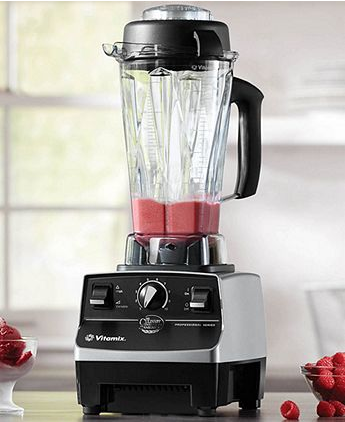
How Can I Reduce My Exposure?
BPA and phthalates can be highly prevalent in the kitchen, and it’s hard to know what is—and is not—a BPA or phthalate-containing plastic. Fortunately, there are ways to help protect yourself and your family from unnecessary exposure:
- Do not place boiling or very hot liquids in plastic vessels.
- Do not place plastic containers in the microwave.
- Skip the dishwasher and opt to hand-wash all plastics instead.
- Reduce your use of canned foods. Whenever possible, go fresh!
When it comes to children in the household, it’s best to simply ensure that when you purchase canned foods, baby bottles, feeding cups, and food containers that are explicitly labeled BPA and phthalate-free.
Our kitchens are meant to be safe havens of sustenance, providing an area to explore the great joys of cooking. They are also often a commonplace in the home, where we can gather and socialize with family members throughout the day. Equipped with the knowledge to elect healthier choices with green cookware and good kitchen practices, we can build a toxin-free environment to be enjoyed, worry-free.
Before you go, take some coupons with you to save and stay green at the same time. Going green is not costly at all.




